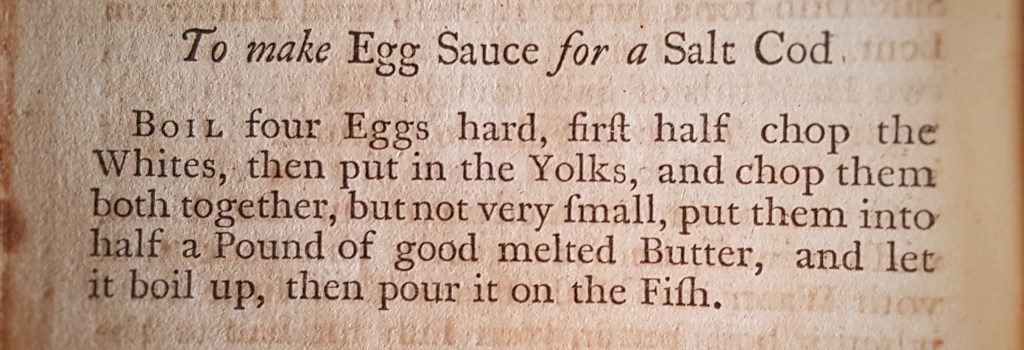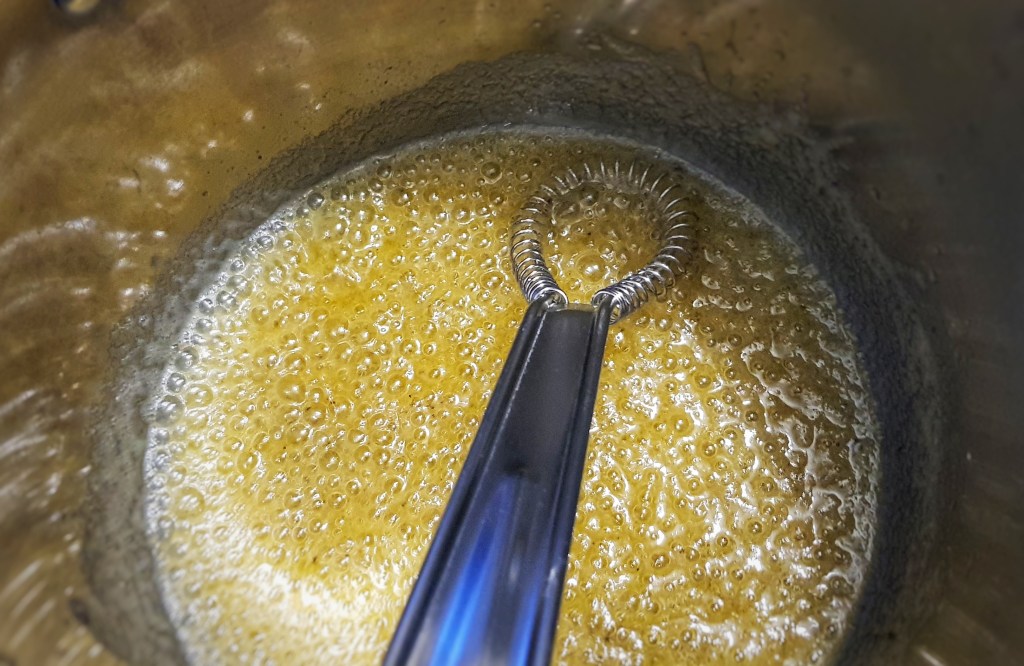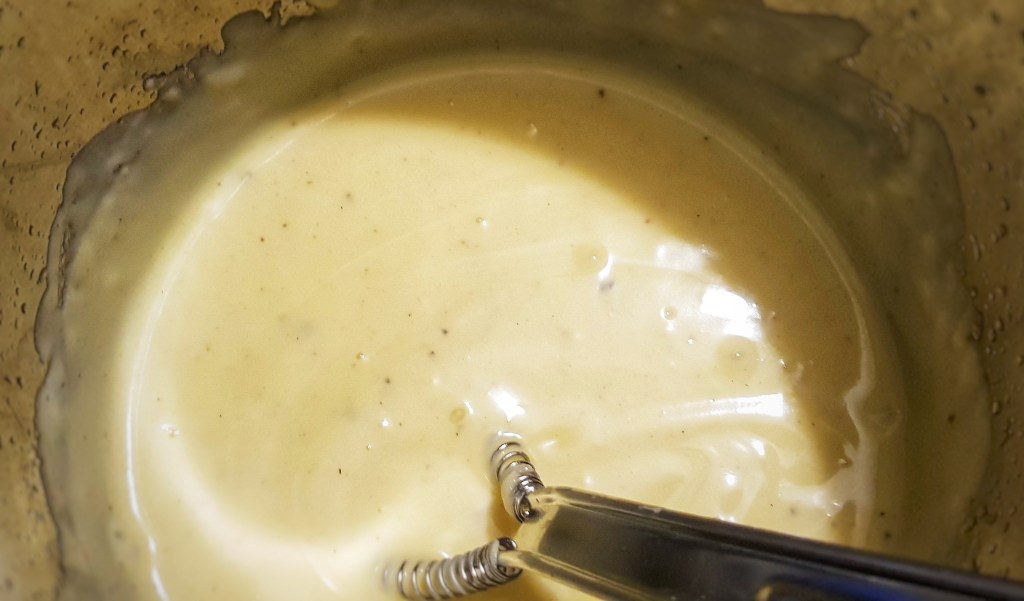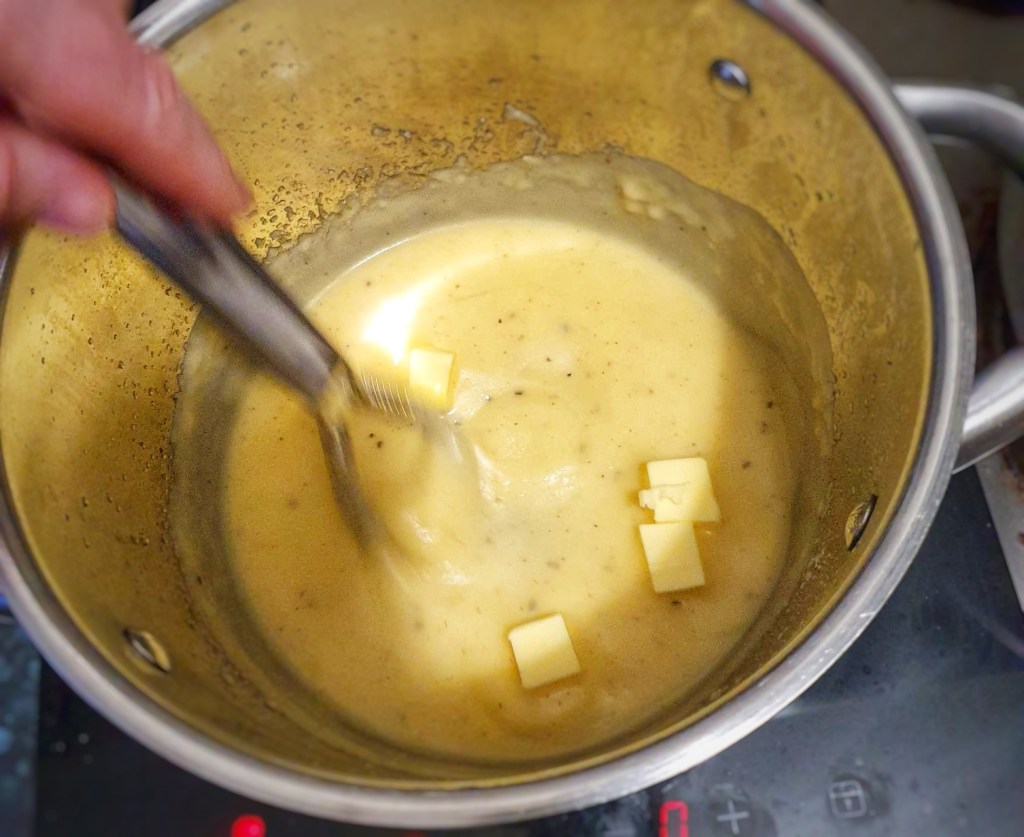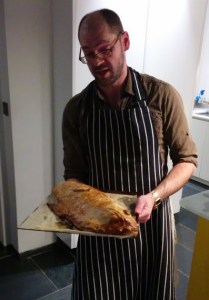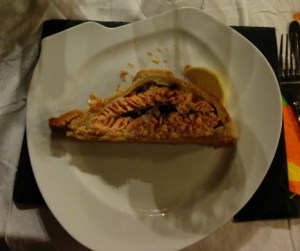If you leaf through English cookery books of the 18th and 19th centuries, you will see much mention of ‘melted butter’ or ‘good melted butter’, such as this one, a recipe for egg sauce from Elizabeth Raffald’s The Experienced English Housekeeper (1769)[1]:
You would be completely forgiven if you took those words literally, however, what Elizabeth is referring to is butter sauce, ‘or’, as one-time chef to Queen Victoria Charles Elmé Francatelli put it, ‘as it is absurdly called, melted butter’.[2] It achieved this misleading moniker simply because of its ubiquity. In fact, it was so ubiquitous that Mrs Raffald doesn’t even include a recipe for it. Luckily for us, Hannah Glasse does in Art of Cookery[3]:
Used freely across three centuries, it became known as the ‘one sauce’ of England. The recipe, at least in its constituents, doesn’t really change: it is essentially a thin roux made with flour and water (or stock), enriched with melting cubes of butter, essentially a beurre blanc stabilised with flour – very useful for a sauce that was potentially left standing on a dining table for an hour. Jane Grigson likened it to a hollandaise thickened with flour instead of egg yolks.[4] It can certainly be used in place of either. Butter sauce forms the basis of several other sauces, it can be sharpened with lemon juice, enriched with cream, or flavoured with herbs. Sometimes it is flavoured with shellfish, and even gooseberries if it is to be served with mackerel.
Like many of our common foods, they are mistreated, corners are cut and fillers are added. As Francatelli observed, ‘it is too generally left to assistants to prepare as an insignificant manner; the rest is therefore seldom satisfactory.’[5] Indeed, my first meeting with it was back in the 1980s in the form of a boil-in-the-bag frozen cod steak in butter sauce. I certainly enjoyed it at the time, but upon making a ‘proper’ one decades later for my Neil Cooks Grigson blog,[6] I immediately saw that the sauce I had consumed as a child was a shadow of its former self. Writing in English Food at a time when the hold nouvelle cuisine had on the restaurant scene was beginning to wane, Jane Grigson hoped we might return to this sauce and appreciate it again.[7] We didn’t, but perhaps now is the time?
If you like the blogs and podcast I produce and would to start a £3 monthly subscription, or would like to treat me to virtual coffee or pint: follow this link for more information. Thank you.
My recipe, below, is adapted from Jane Grigson’s, which in turn, is adapted from Francatelli’s, so it has quite the pedigree. The only significant change I have made is to reduce the amount of flour. I’ve tinkered with amounts so that a full 250g pack of butter is used; no messing about with weights (and there is something quite satisfying about using a whole block of butter). Don’t let any memories of bad school meals put you off, and don’t let the amount of butter put you off either, it’s a surprisingly light and delicate sauce.
It’s simple to prepare, as long as you don’t let the diced butter become hot enough it melts fully. I love this sauce served with steamed vegetables such as asparagus, purple sprouting broccoli, leeks or new potatoes, as well as simple poached eggs, sole or salmon. If you have some poaching liquid or stock, it can replace the water used in the recipe.
I’ve provided some simple, classic variations below should you fancy trying them.
Serves 4 to 6:
250g very cold unsalted butter, diced
2 level tsp plain flour
120ml hot water
Salt
Ground black pepper
Pinch nutmeg and mace (optional)
Squeeze lemon juice
2 tbs cream (optional)
Put around one-third of the butter in a saucepan over a medium-low heat and allow it to melt, then stir in the flour with a wooden spoon, or better a small whisk, and allow to cook gently for a couple of minutes – on no account let it brown. If the flour fries and clumps a little, don’t worry. Now mix in the hot water by degrees, only adding more when the water in the pan has fully mixed into the flour and butter. Season with salt, pepper and nutmeg and mace, if using. Allow to gently simmer for 6 or 7 minutes over a low heat. Take the pan off the heat and let it cool for 2 minutes.
Now start beating into the sauce 3 or 4 cubes of butter so that they slowly melt and amalgamate into the sauce. Only when the cubes have disappeared, should you add more. Once you have done this a couple of times, the sauce will cool and the cubes won’t melt so easily, so put the pan over the lowest heat possible, and then continue to add more.
When the butter is used up, add a small squeeze of lemon, stir and check for seasoning. If you like, add cream.
Serve the sauce in a warm jug, or pour over vegetables or fish.
Variations:
Parsley sauce: add a tbs of finely chopped parsley. Eat with some delicately poached cod and stick two fingers up to Captain Birdseye.
Caper sauce: add a tbs of capers, whole or chopped. If you like, season with a little wine vinegar instead of lemon juice. A more piquant sauce to eat with richer foods: skate, brains and poached lamb or mutton.
Egg sauce: make the sauce as above, but when it is ready add the mashed yolks of 3 hard-boiled eggs and then the whites finely diced. Traditionally this is eaten with salt cod and parsnips in Lent.
Shrimp sauce (possibly the most delicious variation). Use a good handful of cooked brown shrimp in their shells (if you can get them) or small prawns. Remove the shells, and boil them in the water to make a rich stock. Use this instead of water. When the sauce is ready, stir in the shelled prawns or shrimps. This is delicious poured over poached turbot. You can also make this sauce with crab or lobster.
Notes
[1] Raffald, E. (1769) The Experienced English Housekeeper. First Edit. J. Harrop. Available at: https://archive.org/details/experiencedengl01raffgoog
[2] Francatelli, C. E. (1888) Francatelli’s Modern Cook. 26th edn. T. B. Peterson & Brothers. Available at: https://www.google.co.uk/books/edition/Francatelli_s_Modern_Cook/ww5Yg0hT5eQC?hl=en&gbpv=0
[3] Glasse, H. (1747) The Art of Cookery Made Plain and Easy. Prospect Books. The image is taken from the 1763 edition, but the recipe is unchanged from the original 1747 edition.
[4]Grigson, J. (1992) English Food. Third Edit. Penguin.
[5] Francatelli (1888)
[6] Buttery, N. (2011) #272 Melted Butter, Neil Cooks Grigson. Available at: http://neilcooksgrigson.com/2011/02/06/272-melted-butter/
[7] Grigson (1992). Though I have referenced the third edition, Jane made this point in the second edition, which was published in the 1980s


